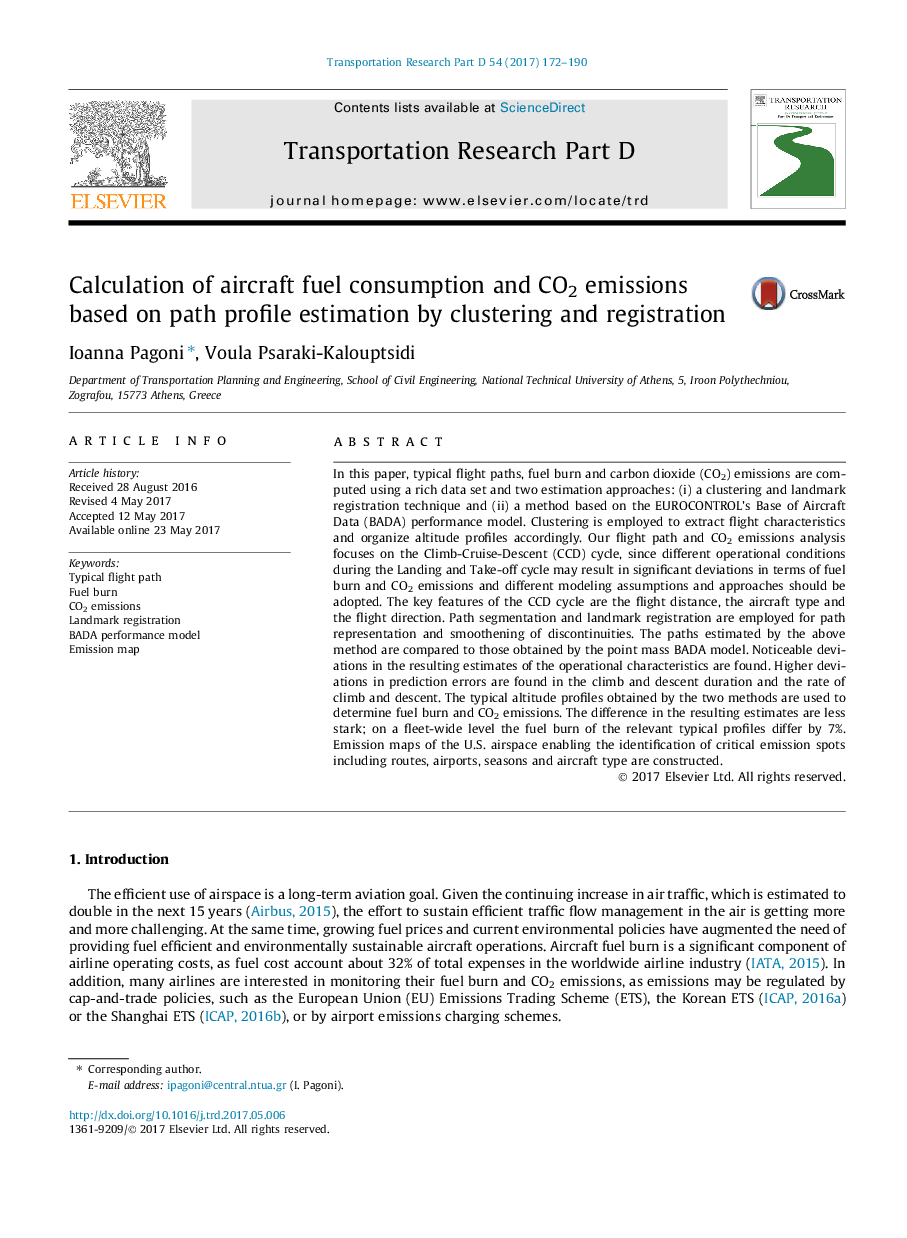| Article ID | Journal | Published Year | Pages | File Type |
|---|---|---|---|---|
| 5119227 | Transportation Research Part D: Transport and Environment | 2017 | 19 Pages |
â¢Typical flight paths, fuel burn and CO2 emissions are estimated by two approaches.â¢Noticeable deviations in the resulting flight operational characteristics are found.â¢The deviation in the estimates of fuel burnt over the CCD phase is less pronounced.â¢BADA-based profiles are estimated to burn less fuel than registration-based profiles.â¢Emission maps of the U.S. airspace are constructed.
In this paper, typical flight paths, fuel burn and carbon dioxide (CO2) emissions are computed using a rich data set and two estimation approaches: (i) a clustering and landmark registration technique and (ii) a method based on the EUROCONTROL's Base of Aircraft Data (BADA) performance model. Clustering is employed to extract flight characteristics and organize altitude profiles accordingly. Our flight path and CO2 emissions analysis focuses on the Climb-Cruise-Descent (CCD) cycle, since different operational conditions during the Landing and Take-off cycle may result in significant deviations in terms of fuel burn and CO2 emissions and different modeling assumptions and approaches should be adopted. The key features of the CCD cycle are the flight distance, the aircraft type and the flight direction. Path segmentation and landmark registration are employed for path representation and smoothening of discontinuities. The paths estimated by the above method are compared to those obtained by the point mass BADA model. Noticeable deviations in the resulting estimates of the operational characteristics are found. Higher deviations in prediction errors are found in the climb and descent duration and the rate of climb and descent. The typical altitude profiles obtained by the two methods are used to determine fuel burn and CO2 emissions. The difference in the resulting estimates are less stark; on a fleet-wide level the fuel burn of the relevant typical profiles differ by 7%. Emission maps of the U.S. airspace enabling the identification of critical emission spots including routes, airports, seasons and aircraft type are constructed.
